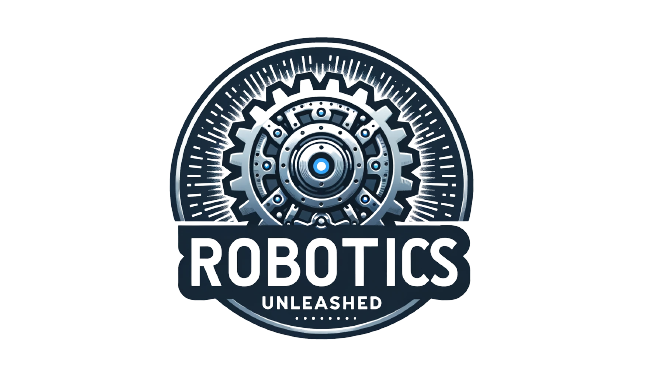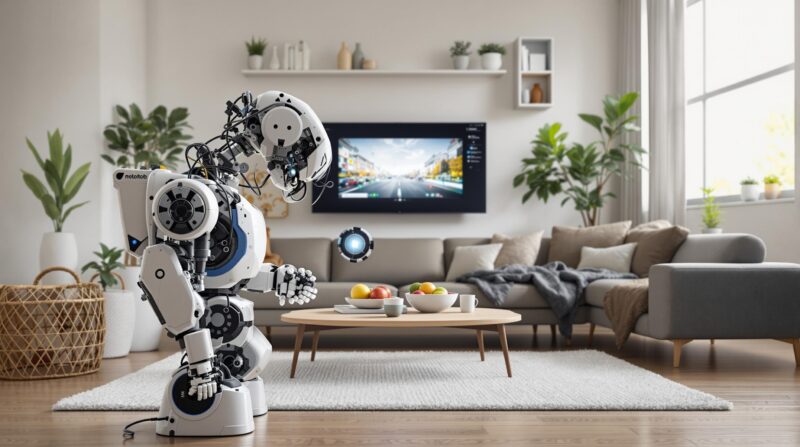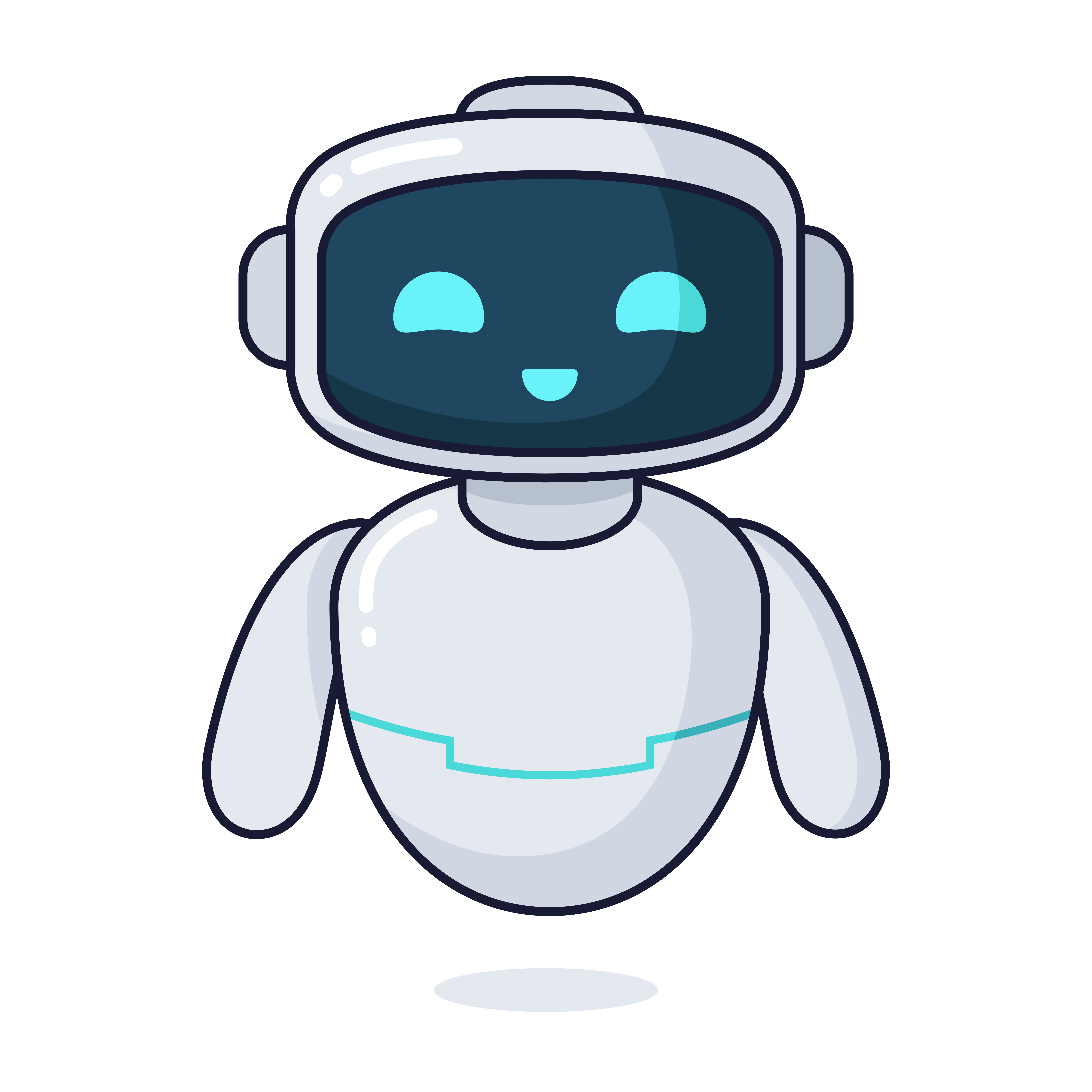Household robotics has transformed from a futuristic concept to an essential component of modern living, with robots now handling everything from floor cleaning to home security. As the global market for domestic robots expands at a remarkable pace, these automated assistants are dramatically reshaping how we manage our homes by taking over routine tasks, optimizing energy consumption, and enhancing security systems.
Key Takeaways
- The household robot market is projected to reach $24.66 billion by 2029, growing at a 21% CAGR
- Domestic robots can save households 4-6 hours weekly by automating common chores
- Smart integration of robotic systems can reduce energy consumption by 10-15% annually
- Security-focused robots have helped some communities achieve a 40% reduction in crime
- Despite 72% user satisfaction, privacy concerns remain significant as robots collect household data
The Rise of Household Robots: From Novelty to Necessity
The transformation of household robotics from luxury gadgets to practical necessities has accelerated dramatically in recent years. The global market for these domestic helpers is projected to grow from $11.51 billion in 2025 to an impressive $24.66 billion by 2029, reflecting a compound annual growth rate of 21%. This surge isn’t surprising given that over 2.1 million floor-cleaning robots were sold in 2023 alone, accounting for 57% of all domestic service robots.
The current market is experiencing a 16.88% CAGR (2024-2030) driven by increasing demand for home automation solutions. Today’s robots handle much more than just vacuuming—they now tackle various household chores, optimize energy usage, and provide comprehensive security monitoring, fundamentally changing how we manage our living spaces.

Reclaiming Your Time: How Robots Automate Daily Chores
One of the most compelling benefits of household robots is their ability to give us back our time. Floor cleaning robots like iRobot Roomba and Trifo Lucy reduce cleaning time by up to 50% compared to traditional manual methods. For laundry tasks, FoldiMate’s robotic folder processes an entire load in just 4 minutes, eliminating one of the most time-consuming household chores.
Outdoor maintenance has also been revolutionized by robotic assistants. Husqvarna Automower can handle lawns up to 0.8 acres without human intervention, while the Maytronics Dolphin cleans pools autonomously, freeing homeowners from these regular maintenance tasks. According to the World Economic Forum, approximately 39% of domestic tasks could be automated within the next decade, potentially freeing 4-6 hours weekly per household.
Energy Optimization and Cost Reduction Through Smart Integration
Beyond saving time, household robots offer significant benefits for energy conservation and cost reduction. Smart thermostats that sync with HVAC systems adjust temperatures automatically based on occupancy patterns, resulting in energy savings of 10-15% annually. Similarly, robotic lawn mowers trim grass to precise heights, reducing water consumption by 20% compared to conventional mowing methods.
The financial equation has also become more favorable for consumers. Multifunctional devices like Lucy vacuum-mop combos eliminate the need for separate appliances, cutting both upfront costs and storage space requirements. Meanwhile, component cost reductions have made robots approximately 30% more affordable since 2020, bringing these technologies within reach for more households.
Enhanced Home Security: Surveillance and Threat Detection
Home security has reached new levels of sophistication with the introduction of security-focused robots. The KnightScope K5 uses lidar and thermal sensors to patrol property perimeters, with deployments showing a 60% reduction in suspicious activity. Similarly, SM Proactive’s outdoor robots detect potential intruders and immediately alert homeowners through mobile applications.
The real-world impact of these security robots is impressive. One Texas neighborhood using robotic patrols reported a 40% drop in crime within just six months of implementation. On the digital security front, systems like Gajshield’s AI-driven firewalls encrypt robot-to-device communications, preventing an estimated 98% of hacking attempts targeting smart home networks.
Robots for Specialized Home Care
The aging population has created demand for robots that can assist with specialized care needs. AI companions like FRIEND help elderly users with meal preparation and mobility, addressing growing labor shortages in the caregiving sector while promoting independence. These specialized robots feature advanced sensors that monitor vital signs and can detect falls or unusual behavior patterns that might indicate health issues.
Some models offer additional healthcare support by providing medication reminders and facilitating video calls with healthcare providers. This integration of machine learning in robotics is creating systems that can adapt to individual needs and preferences over time, making them increasingly valuable for specialized home care.
Privacy Considerations in the Age of Home Robots
While 72% of users report satisfaction with their robotic assistants, privacy remains a significant concern as these devices collect and process household data. Encryption protocols like those in Gajshield’s systems are essential for protecting personal information from unauthorized access. Machine learning algorithms have also become crucial for blocking phishing attempts specifically targeting robotic systems.
I recommend several best practices for maintaining privacy with household robots:
- Regularly update firmware and security patches
- Implement network segmentation for robotic devices
- Review and adjust privacy settings frequently
- Disable unnecessary data collection features
- Use strong, unique passwords for all connected devices
The Future of Household Robots: Emerging Capabilities
Looking ahead, 360iResearch forecasts a surge in “all-in-one” robots capable of cooking, cleaning, and childcare by 2030. These next-generation robots will feature more sophisticated voice recognition and natural language processing, enabling more intuitive human-robot interaction. We’re also seeing developments in emotional intelligence capabilities that will make robots more effective as companions, particularly for elderly or isolated individuals.
The integration with other smart home systems is creating seamless automated environments where robots work in concert with fixed smart home features. As AI-powered robotics continue to advance, we can expect household robots to become even more capable of understanding context and adapting to changing household needs, representing one of the most exciting robotics trends of the coming decade.
How to Choose the Right Household Robot for Your Needs
Selecting the ideal household robot requires careful consideration of your specific needs and circumstances. First, assess your primary requirements: Do you need help with cleaning, security monitoring, companionship, or specialized care tasks? Next, consider compatibility with your existing smart home ecosystem to ensure seamless integration.
Privacy features and data security protocols should be a top priority in your evaluation process. It’s also important to balance the initial investment against the long-term time and energy savings these devices can provide. For those ready to make a purchase, top-rated options include iRobot Roomba for cleaning tasks, KnightScope K5 for security applications, and FRIEND for elder care assistance.











